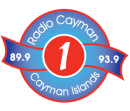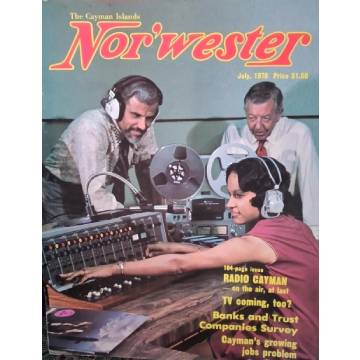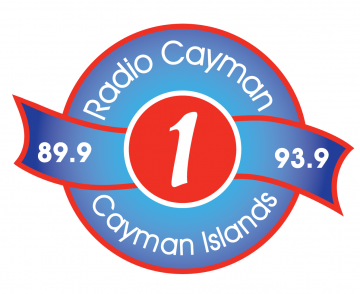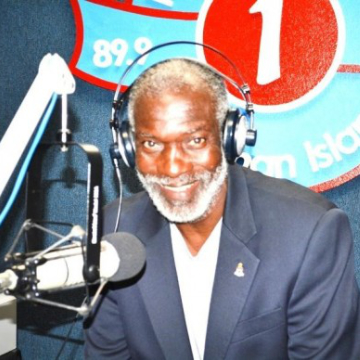News
The Cayman Islands’ 2021 Census of Population and Housing

The Deputy Premier and Minister for Finance & Economic Development, Hon. Christopher Saunders, MP –with the Economics & Statistics Office (ESO) – released The Cayman Islands’ 2021 Census of Population and Housing Report.
The results of the Census report conducted from October 10, 2021 to January 25, 2022 was presented today at a Press Briefing by the Deputy Premier and Hon. Premier G. Wayne Panton. The information presented comprises the country’s demography, disability and illness, education, marital and union status, fertility, employment, household and housing characteristics, mortality, emigration, crime, agriculture and fishing activities and food security.
These population trends and key indicators are integral and guide the provision of many government services. The Deputy Premier stressed the importance of using the census results as key health, infrastructural and educational indicators: “We need information to make informed decisions and that is why we are so grateful to the hundreds of census workers and the thousands of residents that took the time out to complete the census survey. We cannot serve the public without information and feedback from the public,” said the Deputy Premier.
Additional metrics that were not previously included in the past census were also added, such as literacy rates, the number of household employees, the incidence of crime and what proportion was reported to the Royal Cayman Islands Police Service (RCIPs), household engagement in agriculture and fishing, and more.
“We believe that these additional metrics will assist us in calculating our HDI or Human Development Index. This government believes that, while traditional economic metrics still have a purpose, those metrics need to be supplemented by other qualitative metrics that measure the quality of life for our people,” the Deputy Premier commented.
Premier Wayne Panton also stressed the importance of using the census results to improve our social conditions and standards of living for vulnerable members of the community: “With the new census information we now have information on persons outside the labour force, older persons, persons with disabilities, veterans, persons in households with food security issues and those without health insurance for example. Having this information is going to be very valuable in assisting our government in being able to work for you, but it will also help the many hard-working community-based groups – the NGOs – to better understand and serve the people they help as well,” said the Premier.
Some of the highlights of the Census Report are as follows:
Demographic Characteristics
The total population in 2021 stood at 71,432, comprising 71,105 persons living in households or non-institutions and 327 persons living in institutions (including prisons and dormitories). The non-institutional population in 2021 grew by 29.2 percent over the 2010 Census count (55,036). This overall growth was mainly due to an increase in the Caymanian and Non-Caymanian population: there were 7,068 more Caymanians or an increase of 22.8 percent, compared to 9,001 more Non-Caymanians or an increase of 37.4 percent.
The majority of the non-institutional population lived in George Town (49.1%), followed by West Bay (21.6%), Bodden Town (20.9%), Sister Islands (3.2%), North Side (2.7%) and East End (2.6%). Compared to the 2010 population, Bodden Town recorded the highest growth rate at 40.8 percent. Except for the Sister Islands, the other districts grew at lower rates than Bodden Town: West Bay by 36.6 percent, East End by 31.2 percent, North Side by 28.6 percent, and George Town up 24.3 percent. Sister Islands declined by 1.7 percent.
The population had slightly more males (50.6%) than females (49.3%). This was consistent across all districts, except Bodden Town and the Sister Islands, where the proportion of females was slightly higher than males. In Bodden Town, the percentage of females (51.7%) was relatively high compared to the other districts.
Disability and Health Insurance
Among the population, the top two disabilities were sight and lower limb (leg) disabilities, with incidence rates of 35.0 and 31.1 per 1,000 persons. Meanwhile, the top three illnesses leading to disability was diabetes (43.6 per 1,000), arthritis (20.9 per 1,000) and cataracts (19.0 persons per 1,000).
Approximately 93.1 percent of the employed population had health insurance, 0.2 percent were deemed uninsurable, while 5.3 percent had no insurance.
Highest Grade Completed and Examination Passed
Compared to the 2010 census, the percentage increased from 45.5% in 2010 to 52.3% in 2021 of our population that had above a post-secondary education.
Commenting on this increase in post-secondary education, the Deputy Premier stated: “This is a number that the Government is committed to improving and the reason why Education is Broad Outcome Number 1 in our Strategic Policy Statement, and why the government is committed to seeing both UCCI and ICCI becoming free for all our citizens.”
Marital and Union Status
Among the residents 15 years and older, 48.4 percent were legally married, while a significant percentage were never married (38.3%). The marriage rate was generally higher among Non-Caymanians (49.2%) than Caymanians (47.6%). However, the divorce rate was almost twice among Caymanians (10.0%) than Non-Caymanians (5.1%).
Fertility
The survey results revealed that approximately 51.7% of all females aged 15 to 49 years are mothers. The actual replacement fertility rate amongst Caymanian women was 2.1, which the Deputy Premier also commented “is on the positive side as it shows that Caymanian women today are able to generate stability in our Caymanian population going forward.”
Employment
Total employment was registered at 44,441; Caymanians accounted for 19,494 (43.9% of total employment), while Non-Caymanians had 24,947 (or 56.1% of the total). Meanwhile, the unemployed reached 2,679 or 5.7 percent of the labour force. Unemployed Caymanians were counted at 1,803, while unemployed Non-Caymanians were 876, resulting in 8.5 percent and 3.4 percent unemployment rates, respectively.
By sex, male Caymanians had the highest unemployment rate (8.7%), followed by female Caymanians (8.2%), female Non-Caymanians (4.6%) and male Non-Caymanians (2.4%). Across age groups, the highest unemployment rate (32.7%) was recorded among male Caymanians aged 15-24 years.
The top five occupational groups in terms of total employment were professionals (18.3%), service and sales (17.6%), craft and related occupations (14.1%), elementary occupations (13.3%), technicians and associate professionals (12.6%). Altogether, these five groups accounted for 75.9 percent of total employment, 63.9 percent of Caymanian employment and 85.6 percent of Non-Caymanian employment.
The top five industries in terms of employment were construction (14.2%), wholesale and retail (11.5%), professional, scientific and technical activities (10.5%), financial and insurance activities (8.2%) and public administration (7.0%). These altogether account for 51.4 percent of total employment, 59.9 percent of Caymanian employment and 44.7 percent of Non-Caymanian employment.
The Deputy Premier also commeted on the discrepancies in earning by gender and nationality within the same industries, stating that “While I am aware that there may be positions with different levels of seniority; nonetheless we need to make sure that it is indeed based on seniority or type of role, and not anything else.”
Household and Housing Characteristics
The number of households in the Cayman Islands increased by 30.5 percent, from 22,760 in the 2021 Census to 29,699 in the 2021 Census. The average household size declined marginally from 2.42 persons in the 2010 Census to 2.39 persons in 2021.
At least 56.7 percent of all households in the Cayman Islands had housing structure insurance in 2021. Among the districts, households in Bodden Town were most likely to be insured (60.8%), followed by George Town (58.0%) and West Bay (57.1%). However, the reverse was found in the other districts: most households in North Side, East End and the Sister Islands had no housing insurance.
Of the 29,699 households counted in the 2021 Census, 659 (2.2%) households are engaged in the production of solar renewable energy, of which 462 (70% of production) was for sale to the national electricity grid, while another 197 households (30%) produced renewable energy for household use only.
Agriculture and Fishing Activity, and Food Security
Approximately 71.8 percent of households purchased locally produced food, and 63.9 percent used energy-efficient bulbs. Purchasing reusable household items was common among 53.6 percent of households, and 44.6 percent reported purchasing eco-friendly or green products. Recycling and sorting of refuse/garbage were more commonplace, with 36.1 percent of households engaging in this activity in 2021.
Food insecurity in the Cayman Islands was 2.2 percent (or 652 households). North Side and East End households had the highest level of food insecurity at 4.5 percent each. George Town had the lowest level of food insecurity with 1.8 percent, followed by West Bay with 2.1 percent. All the other districts' food insecurity was greater than the national average of 2.2 percent. Of the total households with food insecurity, 65.8 percent were Caymanian households, while 34.2 percent were Non-Caymanian households.
The Deputy Premier and Minister of Finance concluded in saying “I urge all residents to take the time and read this comprehensive Report. It will serve as the foundation for evidence-based policy at the Government level and is indeed vital to decision-making at every level of society, including investment and business decisions.”
Premier Wayne Panton also expressed his appreciation to the community for progressing the report and surpassing the difficulties COVID-19 posed: “I appreciate the hard work involved in this report. When this exercise was started last October, COVID-19 protocols were in place and despite those challenging circumstances, our dedicated census workers did an amazing job collecting this necessary and vital data,” said the Premier.
“I also thank the thousands of Caymanians and residents who responded to the census workers. As a result of their efforts and your cooperation, we have a census report that will not only help government but also the private sector, other non-governmental organisations, civic and community groups, and residents plan for a better tomorrow for Cayman using vital information from today,” he added.
For more information on The Cayman Islands’ 2021 Census of Population and Housing Report, please visit www.eso.ky. To watch the full Press Briefing, visit www.youtu.be/LXFltkWILzo.












